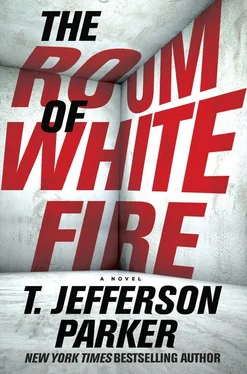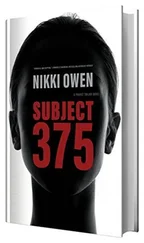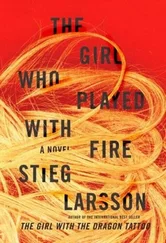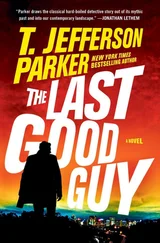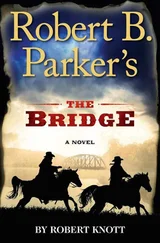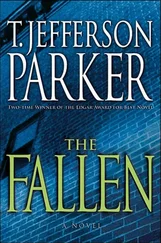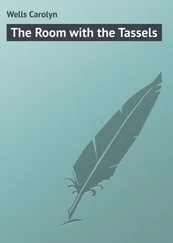See, right there,” said Clay. He touched his finger to the screen but he didn’t have to. Aaban was half a head taller than the two other prisoners, and he was just as tall and thick as the beefy young Americans escorting them from the vehicle. The prisoners were triple-shackled to each other — ankles, waists, wrists. Aaban glared at the video shooter as he walked past. He was hawk-faced, with a full beard and thick gray-black hair.
“Aaban means ‘Angel of Iron’ in Dari,” said Clay. “When he walks by the camera he says, ‘I will eat your eyes,’ but you can’t hear his voice very well. We always filmed the new detainees arriving so we’d have a chronological record of their progress. Before and after. Some of them you wouldn’t even recognize after six months. Their whole posture changes. That’s from stress positions and compliance blows. We put Aaban alone in the smokehouse cellar. It was the closest thing we had to a dungeon. Next, you’ll see him getting walled the very next day, then chained to the ceiling so he has to stand up on the balls of his feet. That makes your arches cramp. Painful.”
The smokehouse cellar was made of very dark stones that seemed to be fitted without mortar. They looked wet. The ceiling was low and there was only one small window — a horizontal, iron-grated slot just above ground level. One industrial, mesh-covered lamp hung down. A dungeon indeed. The cameraman recorded the thin mattress on the stone floor, a plastic bucket, then Clay, standing in the poor light, dressed in fatigues and a civilian windbreaker. With him was a dark, shaggy young man wearing a T-shirt and jeans. “Moe,” said Clay. “One of our ’terps. You’ll see other guys come and go.”
“Who’s shooting the video?”
“Don Tice. Who now works for Dr. Spencer at Arcadia.”
“Interesting.”
“He’s a dispensing nurse. Nice guy.”
An odd-looking plastic structure stood near the middle of the room. Beside it stood Aaban, stripped down to what looked like a dirty nightshirt. Hands cuffed behind him, of course. A crude wooden collar had been clamped around his neck. The collar had rope handles at opposite sides, and the interrogator — Clay Hickman — pulled Aaban forward across the room by the collar with both hands, then stopped and pushed hard, backward, sending him into the plastic wall. Aaban hit with a loud crack. The wall shuddered and Aaban crumpled to the floor. A moment later he was up, crouched and turning in a slow circle to find and face his tormentors.
“The walling wasn’t to hurt them, it was to make them think they were hurt,” said Clay. “The sound it made. The sound made them believe they were being seriously injured. Over and over again. And when they realized they were not, they began to doubt their own senses. To realize we could manipulate their senses. With enough repeated loss of self-control, they would reach the point of distortion and become totally helpless. This was based on Dr. Martin Seligman’s experiments with caged dogs and electric shocks. You can break the will to resist. They learn to be helpless. That was when they were most willing to talk. But not Aaban. He never learned to be helpless.”
I watched as Clay’s co-interrogator — John Vazquez — snuck up on Aaban from behind, took the collar handles, and wrenched him around in a semicircle. Moe, the interpreter, hopped out of the way. Vazz hurled Aaban into the clattering wall again. And again the man struggled up and readied himself for the next attack.
“Next is Aaban chained to the ceiling in a stress position. This was one of our best EITs and it left no marks or scars. Visually, there’s not much to it. I mean, you couldn’t sit here and watch Aaban stand like that for the real-time period that we made him stand. Twenty-six hours was the longest. Of course, he couldn’t sleep, either, and we didn’t feed or water him much. Sometimes we’d release him to use his bucket. Other times not. Muslims hate being naked. They hate shitting and pissing into diapers, or worse, just on themselves. So those were enhanced techniques, too.”
I sat there for a long while, watching Aaban. He was standing near the middle of the room, his arms raised over his head, wrists bound by a shackle that was roped to a fixture in the ceiling. His calves strained and his bare feet flexed, and sweat poured down his face and torso and into his diaper. He was big and well-muscled and he looked like a tortured Argonaut in an old movie. Standing in the background and watching were four men dressed as cowboys — chaps, yoked shirts, bandanas, cowboy boots, and 9mm semiautomatic pistols strapped to their thighs. Two wore black cowboy hats. Bodart’s Wranglers, I remembered. And I recognized Bald Mountain from our early-morning encounter in downtown San Diego. In the video he wore what looked like the same leather duster. Same cowcatcher mustache. “Who’s the bald cowboy?” I asked.
“Joe Bodart. The only CIA guy to lead an interrogation team.”
“Why did you and Spencer allow that?”
“Crazy monster would do anything. Think Nell will like this?”
“I don’t know.”
“It’s nothing compared to what comes later.”
“Nell will wonder if the public should see this.”
“The CIA destroyed all the White Fire torture video — twice. First was back in 2005, before my time. Dr. Spencer told me about it. The agency thought it would be devastating if the public saw the torture. Then later, just before White Fire was closed, our CIA handlers pulled the same thing on us. Confiscated all our phones and hard drives, all our flash drives and memory cards and notebooks — anything that could hold evidence. Searched our belongings, right down to wallets and dopp kits. But they missed the dolls. A lot of the guys had souvenirs. Vazz and I cut the stitching real carefully, underneath the dolls’ garments. We worked in the flash drives good and deep, and restitched with the same thread. It took a while. But we were lucky. So this video is probably the last proof there is.”
An uneasy feeling closed over me, like a stage curtain coming down. I’d been assuming that the men who tailed me to the Waterfront Bar and Grill, and later to Fallbrook Airpark, and who were waiting for me in downtown San Diego the night I was with Paige Hulet, were deployed by Spencer. But Spencer had only been one of several players at the black sites, and some of those players answered to higher powers than he did. And therefore had more to lose. So as I sat there with Clay, I understood the much colder fact that Joe Bodart was on my tail, protecting company interests, trying to find and destroy another “last” piece of evidence of what their agency had done at a black site in Romania.
“Clay? What motivates you? Why do you want Nell to tell your story and show these things?”
He was silent for a long moment while he looked at me. It was unnerving being stared at from that close, and all I could think to do was stare back. I watched his eyes — hazel on the left and blue on the right — as they roamed my face. It reminded me of the way Spencer had studied me that first day, speeding through the sky in his little copper helo. “It is not my story. It is mine and Dr. Spencer’s. And Vazz’s and Don’s. All of us. You will understand when you see. So far, this is only context. Please be patient.”
“What was Dr. Spencer’s reaction when you told him you had ‘white fire’ for him?”
“He pretended not to understand what I was talking about,” said Clay. “After I escaped from Arcadia, he hired a private investigator to find me. He admitted this to me on a pay phone conversation. I’m sure he told the detective that I may harm myself or others. And that I need the medications, and the security of Arcadia. But what Dr. Spencer really wants is for no one to know our story.”
Читать дальше
